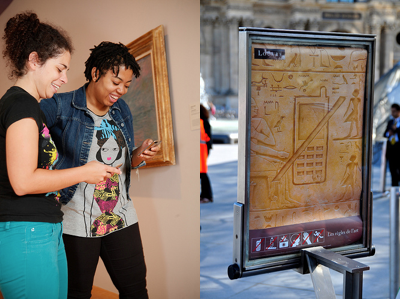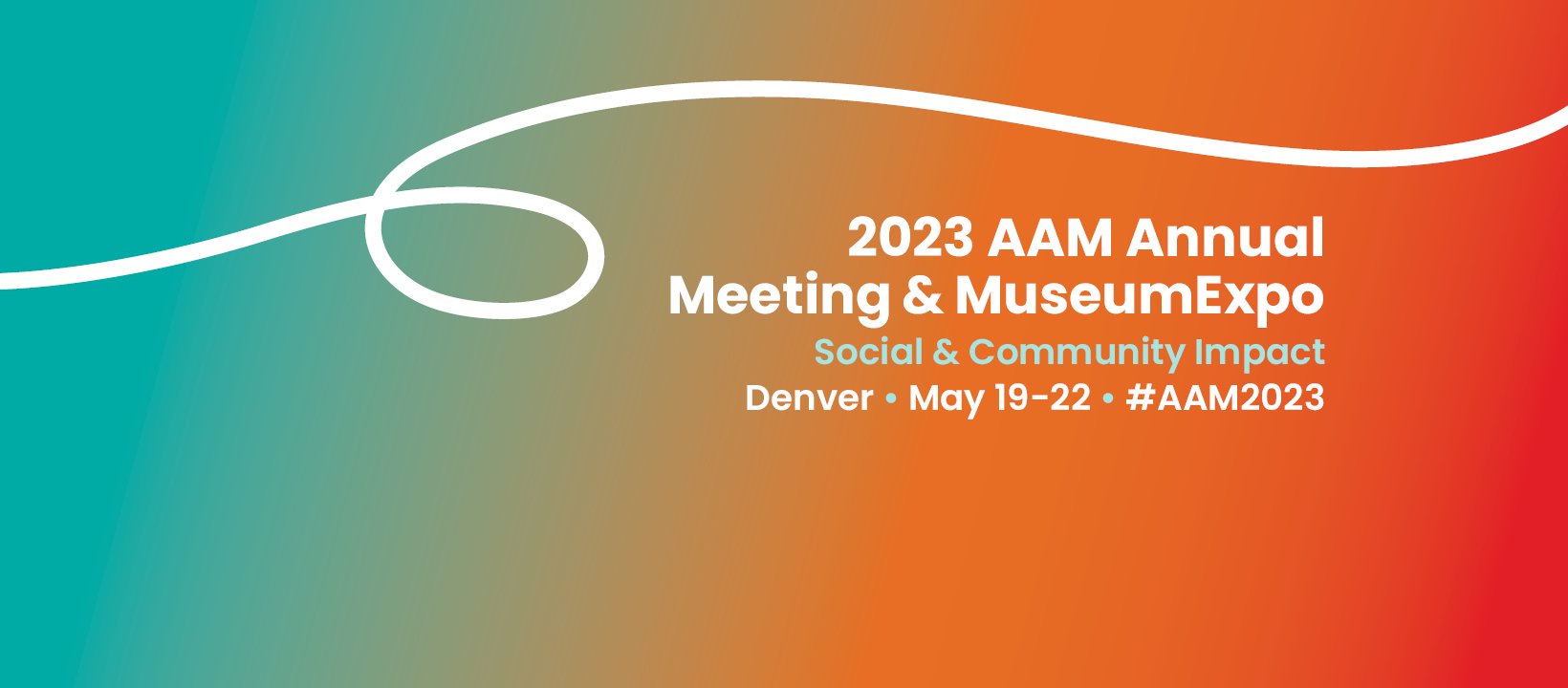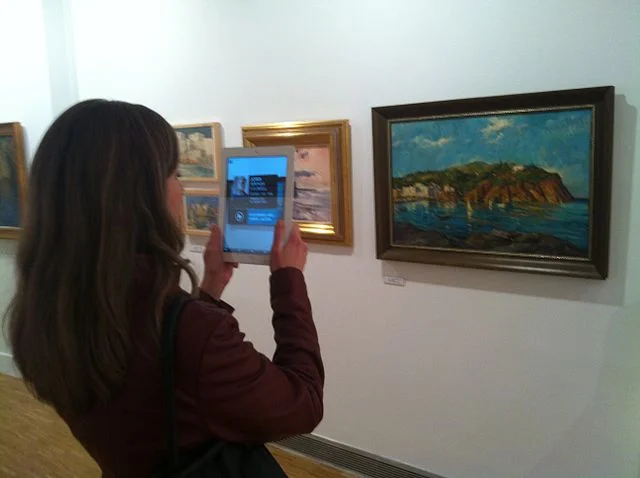Executive Director Dr. Brett Ashley Crawford and Chief Editor Rachel Broughton discuss their biggest takeaways from the 2023 American Alliance for Museums annual conference. This year’s theme was social and community impact—AMT Lab explores this topic through the lens of tech and management.
Summer Road Trip Series: Dali Museum, St. Petersburg, Florida
Introducing the Summer Road Trip Series! In addition to bringing you research and reviews from the art’s management and technology world, over the next few months the AMT-Lab team will be sharing stories of their interactions with art and technology from their travels over the summer. We hope our travels will inspire you to visit a new place on your summer vacation or spark a new idea to try out in your own institution!
Digital Engagement Strategies for the 21st Century Museum
Shifting audience interests towards interactive and shareable experiences has led many museums to explore the potential of digital engagement tools. Given the costs and changes typically required for successful digital integration, museum staff must first ask themselves why their institution should consider investing in emerging technologies and what they hope to achieve from such an investment.
Using AI Powered Art to Increase Social Equity
What if we, as artists, could learn to use AI to remove the barriers between gender, race, and social status? Here are 3 takeaways for arts managers to consider when thinking of how to better engage audiences and communities within their institutions through AI.
Image Credit: Dinkins, Stephanie. "Project al-Khwarizmi (PAK)." Dinkins Studio. https://www.stephaniedinkins.com/project-al-khwarizmi.html.
#TBT: Artificial Intelligence
Enhancing Museum Education: 3D Printing
A Look Back: Museum Computer Network Conference 2017
VR Opportunities
Augmented Reality in Museums
How Will Museums Use Video Streaming?
Research Update: Augmented Reality in Museums
The Role of Technology in Museums
With tools like beacons, iPads, touch screens, and haptic interfaces, technology provides museumgoers with detailed information, customized viewing experiences, and precise location mapping services. However, the use of digital technology in museums is often seen as a double-edged sword, which begs the question: does technology really belong in museums?
Supporting Multi-Touch Functions
Multi-touch technology may be easy to use, but how it works is far more complex. While several technologies support multi-touch functions, museums may find that certain ones suit an exhibition’s needs better than others. Choosing the right multi-touch platform is the first step in creating an interactive and personal experience for visitors.
Multi-Touch Technology and the Museum: An Introduction
Touchscreens have altered the way we interact with our world. From scrolling through our Facebook newsfeed, to picking up tickets at the airport kiosk, we use this technology on a daily basis. Today museums around the world are embracing this tool as a way to promote interactive learning. Multi-touch technology, in particular, can create an interactive and collaborative learning environment. But what exactly is multi-touch technology?
STEAM Learning at the Carnegie Science Center
Moving the conversation around public education from STEM (Science, Technology, Engineering, and Math) to STEAM (Science, Technology, Engineering, Arts, and Math) has long beleaguered arts managers and arts educators alike. Defending the argument for arts programming and arts education can be difficult in the face of shrinking school budgets and a highly competitive grant environment. Particularly in a country that increasingly favors the hard sciences above the humanities, cultural pursuits, and artistic studies. Despite gains at the federal level with the new core arts standards, the STEAM caucus, and the first budget increase for the National Endowment for the Arts in years, it is still easy to feel defeated. The question remains, what can arts leaders and community organizers do at the local level to push the conversation in a positive direction?
Attendance Trends: A Case for Technology in Museums
A Visitor's Experience: The Good, the Bad and the Ugly of Smartphone Apps in Art Museums
Having the good fortune of living in Europe for a few years with many of the world’s most beloved fine art institutions in my backyard, I was pleased to test a myriad of their recently launched apps. There is much to be said for the wonderful ways in which mobile devices can enhance the visitor experience. Of course, there are also downfalls attributed to the growing pains associated with mobile. Often I was impressed, entertained, educated, annoyed, and confused – sometimes all simultaneously. Since mobile planning and implementation can be a backend-focused undertaking for museum staff, the following simply offers the perspective of a museum visitor with a smartphone in tow.
 Visitors use a Davis Museum digital art museum guide. Photo credit: Dot Diva.
No cell phone sign at the Louvre. Photo credit: Tom Arthur.
Visitors use a Davis Museum digital art museum guide. Photo credit: Dot Diva.
No cell phone sign at the Louvre. Photo credit: Tom Arthur.
The Good
- BYOD (bring your own device): Mobile devices are increasing all-in-ones for just about everything. Visitors can skip the line for an audio guide because with the same (if not more robust) content available on their own familiar device, they have the distinct advantage of being audio and multimedia guide self-sufficient.
- Deeper connection: With the inclusion of video and other multimedia content, visitors are offered a closer connection to the artists. The Royal Academy of Arts did a wonderful job incorporating video interviews with Academicians in their 2011 Summer Exhibition app. To back it up, a study conducted at the Davis Museum and Cultural Center found that “on average, participants spent about 39 seconds with a work of art when viewing art without the application, and about 3 minutes and 15 seconds viewing art while using the application.”
- Dialogue: Museums are historically notorious for offering one-way authoritative information. Since most museum mobile apps are outfitted with social media tools such as Facebook and Twitter, visitors are afforded a voice to communicate with the museums (and they actually listen).
- Save and share: I still bring my sketchbook with me on museum visits for notes and doodles, but museum apps make archiving and sharing objects of interest easier to come back to when they offer a “favorite this” feature. Other mobile tools such Pinterest and Twitter hashtags also make the impact of a visit more enduring and accessible.
- Off-site relevance: Many museum apps make content valuable off-site as well as during in-person visits. For example, I dashed through Tate Modern’s Miró Exhibition in a rush, but later read about the impact of the Spanish Civil War on Miró’s work via the exhibition app while waiting to board a plane in Pittsburgh. This pared down version of a catalogue is easier to haul around and cheaper.
- “Edutainment”: Why not learn while being entertained? The Andy Warhol Museum’s DIY Pop app is a great example of experiencing both. We have a frustrated museum education staff member to thank for sparking interest in developing a way to digitally educate the public on Warhol’s silkscreen process while replicating it using our own photos.
The Bad and The Ugly
- Connectivity: Yes, a visitor may skip the line for the audio guide, but once in the gallery app download capability may be spotty since many institutions do not offer Wi-Fi (the cost of which can be a prohibitive expense). To make matters worse, the thick walls of many museums can make using a cellular network virtually impossible. If a visitor can access their cellular network, many multimedia rich museums apps can be data gluttons, especially for foreign travelers out of their network area.
- No phone/camera policies: I’ve become a pro at the art of looking like I’m texting someone, when in fact I’m taking prohibited photos and spreading them on Twitter and Facebook. Some museums are finding it difficult to strike a balance between preventing copyright infringement and fully embracing the use of mobile technology. With apps like “Cards,” you can understand the dilemma of wanting to encourage word-of-mouth marketing while not irresponsibly promoting the dissemination of images not in the public domain. But, as a staff member of the Royal Academy of Arts pointed out to me: “If all the 50 people who came through in the last two hours went home to their Facebook and their Flickr, posted photos of this fantastic place with comments, think of the social media publicity. Think of the viral marketing.” Institutions like the RA are well positioned to proactively ask for artists’ permission for visitors to use and spread images of their work online.
- Slow take-up: Tech savvy visitors who would enjoy a mobile option for museum content consumption are likely a little bummed that art museums tend to lag in mobile innovation. It’s hard to blame museums for not leading the way. Shelley Bernstein, chief of technology at the Brooklyn Museum admits on the museum’s blog that: “[W]e don’t have a large audience for our app. In the galleries on any given day...you’ll see very few visitors pulling out smartphones.” There is a significant demographic gap between the typical museum goer and smartphone owner. Yet, since it is predicted that mobile web browsing will outpace Web browsing on desktop computers by 2015, expect to see a jolt of further mobile enthusiasm from museums on the horizon.
Around the Corner
For individuals such as myself, who are certain their value as a human is inextricably tied to the use of a smartphone, 2010–2011 was an especially great time to be wondering the galleries of Tate Britain, Tate Modern, The Royal Academy of Arts, The Louvre, and more. These institutions’ fledgling apps are a solid start to their entree into mobile tech. In the near future, (especially with the help of new culturally focused app developers) I’ll be excited to see the use of image recognition (a copyright nightmare), mobile transactions (e.g. tickets, membership, gift shop purchases), and the further adoption of augmented reality. Am I asking for too much, too soon? After all, I’m about a step away from expecting my iPhone to wash my dishes if I throw it in the sink. Isn’t there an app for that?
Author Bio
Ashley Paulisick completed her master’s degree in Art Business at Sotheby’s Institute of Art in London in 2011. Her dissertation, titled “The Impact of Mobile Technology on Art Institution Visitor Experiences,” took her to some of the world’s most prestigious art museums, including Tate Modern and Pittsburgh’s own Andy Warhol Museum.
Ashley has also worked in arts administration and as a painter under the “pen” name Ashley Cecil. You can read about and see her work at www.ashleycecil.com and find her on Twitter at @ashleycecil.
Bravo! Hats Off to Innovative Technology!
Congratulations to the 2010 winners of the 21st annual MUSE Awards! We all know that without a collection or traveling exhibits, a museum would not exist. Period. But how long can that museum, despite an amazing collection, exist without connecting to the public in new and exciting ways? It is impossible. Especially in this ever-changing digital age, museums have to get creative! (Slightly ironic, since they are housing creativity to begin with...)
Which is why, every year, the American Association of Museums’ Media & Technology Committee celebrates innovation and creativity of digital media in the museum sector with the prestigious MUSE Awards.
Over 200 entries from museums around the world were reviewed by an international jury of museum professionals and media experts, and the results were presented at the AAM annual conference in Los Angeles.
For full descriptions of all the winners, click the category! But in the meantime, check out some highlights and favorites.
Imagining Lincoln and Juarez; Chicago History Museum and Ed Herrman
The Chicago History Museum has developed pre-programmed iPods and accompanying worksheets, to immerse students in the exhibition with sounds that created the mood and engage them with the collection.
O Say Can You Sing? National Anthem Singing Contest; National Museum of American History, Smithsonian Institution and Night Kitchen
The National Museum of American History held a singing contest to engage the American people with the story of the flag and national anthem. Over 800 eligible entries were submitted via YouTube, and thousands of people rated and commented on their favorites. The winner was invited to perform at both the museum and the Baltimore Orioles game on June 14, 2009 (Flag Day)!
t.a.g. Open Museum
The Association Game (t.a.g.) is a non-verbal educational game for grownups where an image is chosen at random from the Open Museum collection, participants respond with an image that is somehow associated with or reminiscent of the original image, everyone votes on what they think is the best successor, and then the winning image becomes a starting point for the next round. There are three rounds a week with an average of 15 images submitted for each round. **One of my personal favorites because anyone can sign up for free and play the game now!**
UMMA's DialogTable; University of Michigan Museum of Art and Kinecity & Night Kitchen Interactive
The UMMA DialogTable is a dynamic new interactive storytelling and social learning tool located in the Vertical Gallery of the University of Michigan Museum of Art's new Maxine and Stuart Frankel and the Frankel Family Wing. The DialogTable engages audiences with art and ideas, prompting new conversations and creative connections. Since the Table is located in the extended-hours zone of the Museum, visitors can engage with the collection even after the galleries are closed!
Interpretive Interactive Installations
Worldwide Animal Viewers; Museum Victoria and Megafun Pty Ltd
Melbourne Museum in Victoria, Australia recently opened a new biodiversity exhibition, “Wild: amazing animals in a changing world,” which has 770 mammal and bird mounts from all over the globe. Designed for a broad audience, the interactive interpretive device needed to be developed for all types of guests to use. Museum Victoria worked with Megafun Pty Ltd to create the PANORAMIC NAVIGATORS, in this case referred to as "Worldwide Animal Viewers," a surprisingly easy and fun system which accesses additional information about every specimen in the exhibit.
Beyond All Boundaries; National World War II Museum and The Hettema Group
Beyond All Boundaries, the signature 4-D cinematic experience at The National World War II Museum was designed to attract both new and existing audiences to the Museum, and to bring World War II to life in an entirely new way. The words and stories of actual WWII participants are brought to life by many of today's leading actors, and viewers experience the war in first person through state-of-the-art special effects where they feel the vibrations of B-17 bombers and see snow falling inside the theater during the Battle of the Bulge.
We Choose the Moon; John F. Kennedy Presidential Library & Museum and Domani Studios & The Martin Agency
We Choose the Moon is an amazingly integrated website which recreates Apollo 11's lunar mission, minute by minute, with an interactive experience that let visitors experience the mission as it happened, using archival audio, video, photos and "real-time" transmissions on the site and via Twitter.
Audio on demand program; National Museum of Australia and Icelab Pty Ltd
The National Museum of Australia's Audio on Demand program is an evolving collection of recordings of lectures, forums and symposiums held at the Museum's building in Canberra. There is a wide range of topics relating to social history, and especially the Indigenous peoples of Australia since the museum has such a strong collection.
Public Relations and Development
Raising Spirits; Asian Art Museum of San Francisco and The Arts Lounge
Raising Spirits is a comprehensive public relations package designed to promote a traveling, multimedia art history presentation showcasing the Asian Art Museum of San Francisco's permanent collection. The package takes the world-renowned collection "on the road" via a plasma screen into private dining rooms of our patrons, while host Kirsten Shilakes tells tightly woven stories about art, food and wine, taking guests on a multi-sensory aesthetic and culinary journey.
Teaching and Outreach Videos; Art Institute of Chicago and Angle Park, Inc.
Collectively directed towards educators, parents, and caregivers, the Art Institute of Chicago's teaching and outreach videos demonstrate meaningful and effective strategies to engage young audiences on their visit to the art museum. Dynamically accessible in the museum and online with both English and Spanish subtitles, this group of videos created by the Art Institute of Chicago and film company Angle Park, Inc., helps teacher-student and parent-child audiences make the most of their museum visit.
Buck Ramsey's Grass: Anthem; Nevada Museum of Art and FLF Films Inc & UeBersee Inc.
The Nevada Museum of Art has created a moving piece which effectively transports the viewer into a land where the enduring tradition of cowboy poetry is a rich and vital form of cultural expression in the American West. This film was created and produced for the 2009 exhibition Between Grass & Sky: Rhythms of a Cowboy Poem, and is inspired by the Texas poet Buck Ramsey widely-celebrated poem Grass.
Honeysett & Din Student Award (new this year!)
Concept Design: Touch the Unreachable—Looking for Finnish identity; Virva Emilia Auvinen, Aalto University School of Art & Design-MediaLab Helsinki, Finland
"Touch the Unreachable" is a concept design on how to use interactive storytelling techniques, video, 3D animation and graphic visualization for art education purposes. The "Touch the Unreachable" concept is an application designed for a museum environment and aims to promote knowledge of Finnish cultural heritage.
****
What are your favorites? How can these remarkable projects help you and your organization integrate more technology in innovative ways? We would love to hear what YOU are doing!


















